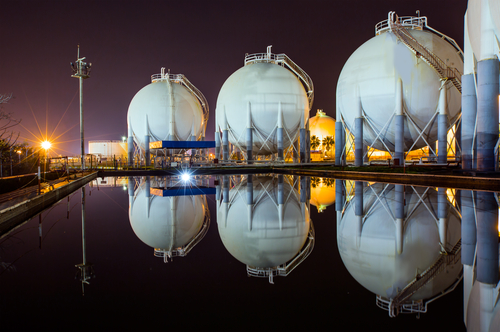Local LNG, two foreign firms team up for $ 1 B LNG plant in PH
- October 3, 2018
- 0

The deal was signed on September 28 this year with a project cost of around $1-billion.
The new power plant will be located in a 12-hectare Philippine National Oil Company (PNOC) property in Bataan.
In an exclusive interview with Manila Bulletin, Catapang was quoted as saying that they will be applying for pioneer incentives with the Board of Investments (BOI) for the venture “as this is the first FSRU LNG project we will have in the country, and it will be our cleaner source of energy.”
If approved, the company will be granted incentives such as seven-year income tax holiday, duty free importation of the equipment, and other fiscal and non-fiscal incentives.
They are also trying to obtain a certification of “energy projects of national significance” (EPNS) from the Department of Energy (DOE).
Catapang said in the report that they are aiming to start the commercial operations of the power plant by the second quarter of 2022.
The plant will be equipped with H-class gas turbine technology from the American energy giant GE. Glencore will be the FSRU provider and supplier of LNG.
In the same Manila Bulletin report, Glencore Business Developer for Oil & Gas Projects and Structure Finance Tai Yang said that the LNG power plant’s requirement will be around “170,000 cubic meters – that would be sufficient for the power plant itself. On the annual throughput, the FSRU should be able to have 3.0 million tons per annum, but the power plant will just be needing 1.0 million tons per annum,” which provides expansion opportunities for the facility or offering the FSRU’s capacity to potential buyers.
In terms of LNG supply, Yang said they “talked about medium to long-term contracts with back-to-back agreement eventually for the power generation component in terms of the PPA (power purchase agreement)…it’s a medium term contract with rollover, like every five years.
Yang added they are open to revisiting the terms of the contract but it has to be “back-to-back with the power supply off-take.”
Meanwhile, Northeast Electric Power Design Institute Co. Ltd., Deputy General Manager Cao Yong said that the Chinese firms has increased confidence in the project due to amiable relationship between China and the Philippines.
“This gives Chinese contractors a good environment to do good projects in the Philippines, and that CEEC has vast experience and competitive advantage to accomplish this project in the Philippines. So we are very confident that we can provide our service to contribute to the cooperation between China and the Philippines on the energy solutions aspect,” he added.